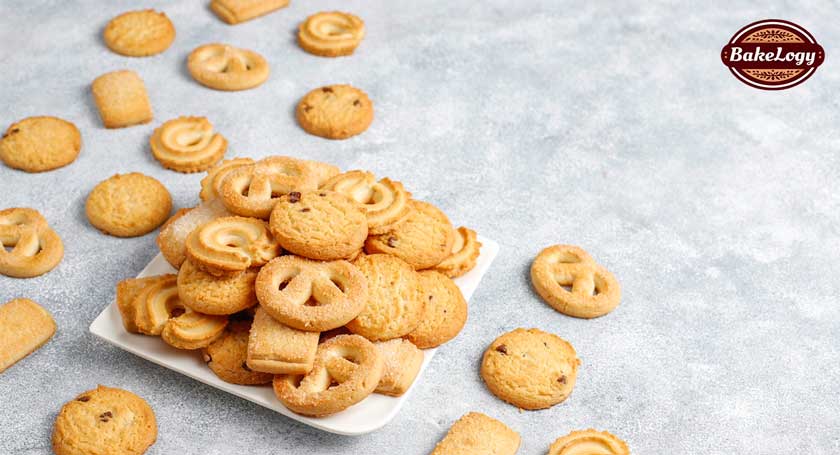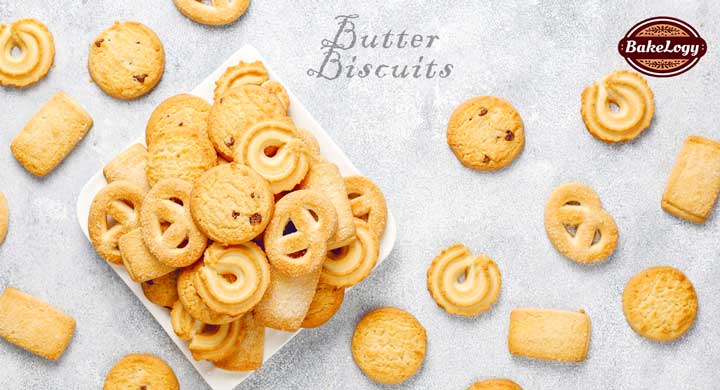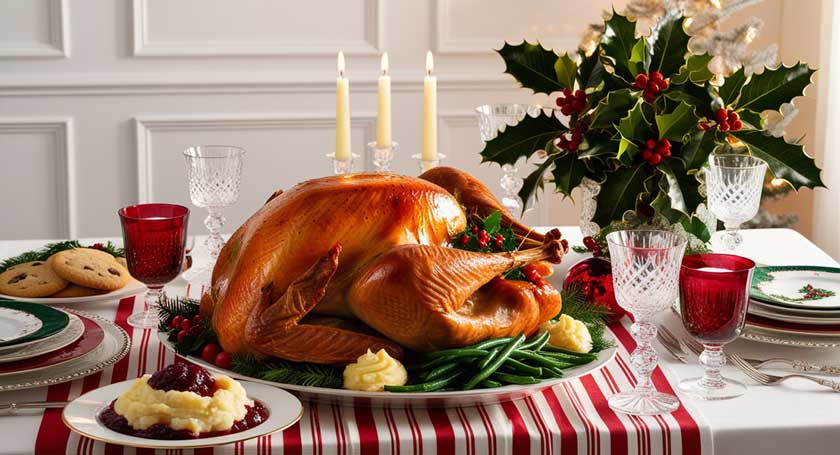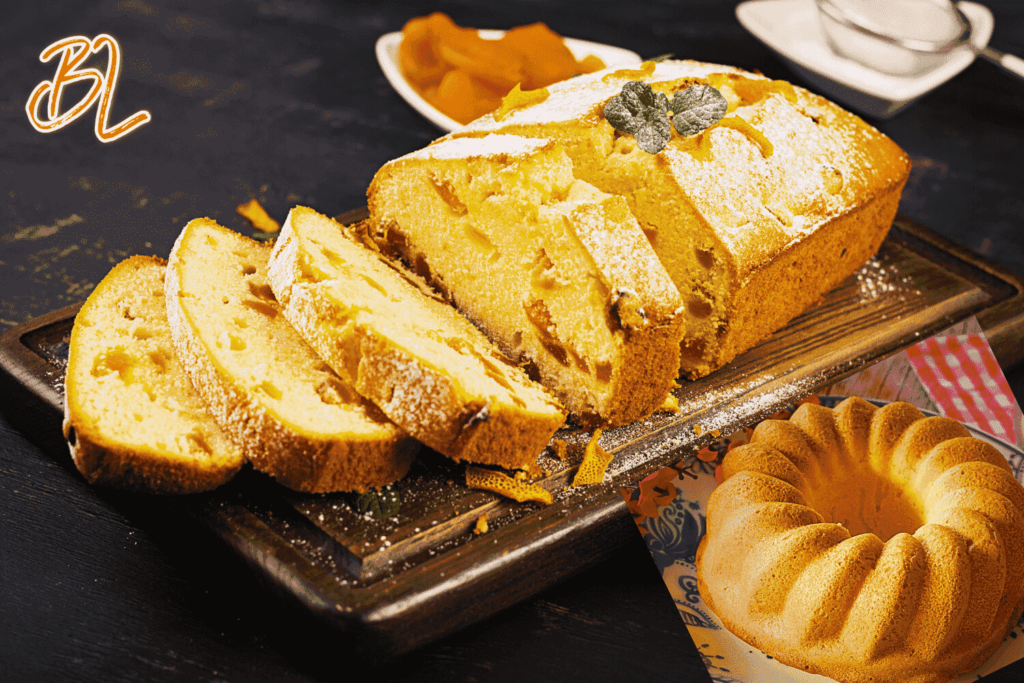Classic Butter Shortbread Cookies are a timeless treat, adored for their rich buttery flavor and delicate, crumbly texture. Originating from Scotland, these cookies have become a beloved staple in British baking, especially during holidays and special occasions. Made with just a few simple pantry staples, they’re incredibly easy to make, making them perfect for both beginners and seasoned bakers alike. Whether enjoyed plain or dusted with powdered sugar, these shortbread cookies are versatile and can be shaped into rounds, squares, or festive shapes with cookie cutters. This recipe will guide you in creating perfectly delicious shortbread cookies that melt in your mouth with every bite. Get ready to fill your kitchen with the irresistible scent of baking butter and enjoy a classic treat that’s stood the test of time.
Variations of Classic Butter Shortbread Cookies
- Chocolate-Dipped Shortbread
- How to Do It: Once the cookies have cooled completely, melt some semi-sweet or dark chocolate in a microwave or a double boiler. Dip half of each cookie into the melted chocolate, allowing any excess to drip off. Place the dipped cookies on a parchment-lined baking sheet and let the chocolate set at room temperature or in the refrigerator.
- Lemon Shortbread
- How to Do It: Add 1 tablespoon of finely grated lemon zest and 1 teaspoon of lemon extract to the dough along with the butter and sugar. For an extra burst of flavor, you can also mix in 1 tablespoon of freshly squeezed lemon juice. These additions will give the cookies a refreshing citrus twist.
- Almond Shortbread
- How to Do It: Replace 1/2 cup of the all-purpose flour with 1/2 cup of finely ground almonds or almond flour. You can also add 1/2 teaspoon of almond extract to enhance the flavor. This variation adds a nutty richness to the cookies.
- Spiced Shortbread
- How to Do It: Mix in 1 teaspoon of ground cinnamon, 1/2 teaspoon of ground nutmeg, and a pinch of ground cloves or ginger with the flour. This spice blend adds a warm, aromatic flavor perfect for the holiday season.
- Lavender Shortbread
- How to Do It: Gently crush 1 tablespoon of dried culinary lavender flowers and mix them into the dough with the flour. The subtle floral notes create an elegant and unique flavor profile.
- Earl Grey Shortbread
- How to Do It: Grind 2 tablespoons of Earl Grey tea leaves to a fine powder and add them to the dough with the flour. The bergamot in the tea infuses the cookies with a delicate, aromatic flavor.
- Pecan Shortbread
- How to Do It: Add 1/2 cup of finely chopped pecans to the dough along with the flour. For added depth, toast the pecans lightly before adding them. This variation provides a delicious crunch and nutty flavor.
- Chocolate Chip Shortbread
- How to Do It: Fold in 1/2 cup of mini chocolate chips into the dough before shaping the cookies. This twist combines the classic shortbread texture with the delightful surprise of chocolate in every bite.
- Matcha Shortbread
- How to Do It: Add 1 tablespoon of matcha green tea powder to the dough with the flour. The matcha gives the cookies a vibrant green color and a unique earthy flavor.

Tips for Variations
- Flavor Adjustments: Depending on the strength of the added flavors (such as extracts or zests), you may want to adjust the quantities to taste. Start with small amounts and add more if needed.
- Texture Considerations: When adding ingredients like nuts or chocolate chips, be mindful of the dough’s consistency. You may need to adjust the amount of flour slightly to maintain the right texture.
- Decorative Finishes: For added appeal, consider sprinkling some coarse sugar or decorating the cookies with sprinkles before baking. This adds a delightful crunch and visual interest.
Experimenting with these variations allows you to personalize your shortbread cookies and create new flavors that suit your taste.
Tips for the Best Classic Butter Shortbread Cookies
- Use High-Quality Butter:
- Since butter is the main ingredient, choose high-quality unsalted butter for the best flavor. The taste and texture of the cookies largely depend on the quality of the butter you use.
- Properly Soften the Butter:
- Ensure the butter is softened to room temperature but not melted. This will make it easier to cream with the sugar and will result in a smoother dough. If the butter is too soft, the cookies may spread too much during baking.
- Don’t Overmix the Dough:
- Mix the dough just until the ingredients are combined. Overmixing can lead to tough cookies. Once the flour is added, mix until the dough just comes together.
- Chill the Dough if Needed:
- If the dough is too soft or sticky to work with, chill it in the refrigerator for about 15-30 minutes. This makes it easier to roll out and shape, and helps the cookies hold their shape during baking.
- Use Parchment Paper:
- Line your baking sheets with parchment paper to prevent the cookies from sticking and to ensure even baking. This also makes cleanup easier.
- Monitor Baking Time:
- Keep a close eye on the cookies as they bake. Shortbread should be pale in color, with just a hint of golden brown around the edges. Overbaking can result in dry, crumbly cookies.
- Cool Completely:
- Let the cookies cool on the baking sheet for a few minutes before transferring them to a cooling rack. This allows them to set and firm up, preventing them from breaking apart.
- Store Properly:
- Store the cooled cookies in an airtight container at room temperature. They can also be frozen for longer storage. If stacking, separate layers with parchment paper to prevent sticking.
- Customize the Thickness:
- For a crispier texture, roll the dough thinner. For a softer, more tender cookie, roll it thicker. The baking time may vary slightly depending on the thickness, so adjust accordingly.
- Add a Finishing Touch:
- For a traditional look, you can prick the tops of the cookies with a fork before baking. You can also sprinkle a light dusting of granulated or powdered sugar on top after baking for a sweet finish.
Following these tips will help you achieve perfect, buttery, melt-in-your-mouth shortbread cookies every time!

FAQs: Answers to Your Baking Conundrums!
1. Can I use salted butter instead of unsalted butter?
- Yes, you can use salted butter, but you’ll want to omit the added salt in the recipe to avoid over-salting. Salted butter can slightly alter the flavor, but it will still work well in this recipe.
2. My dough is too crumbly. What should I do?
- If the dough is too crumbly, it may need a little more moisture. Try adding a teaspoon of milk or water at a time until the dough comes together. Make sure not to add too much, as it could affect the texture.
3. Can I make the dough ahead of time?
- Absolutely! You can make the dough in advance and store it in the refrigerator for up to a week or freeze it for up to a month. If frozen, let the dough thaw in the refrigerator before rolling and baking.
4. How do I store leftover cookies?
- Store leftover cookies in an airtight container at room temperature for up to a week. For longer storage, freeze the cookies in a single layer, then transfer them to a freezer bag or container. They can be frozen for up to 3 months.
5. My cookies spread too much during baking. What went wrong?
- Over-softened butter or too much mixing can cause cookies to spread excessively. Ensure your butter is just softened and not melted. Also, chilling the dough before baking can help prevent excessive spreading.
6. Can I substitute any of the ingredients?
- You can substitute some ingredients, such as using a gluten-free flour blend for a gluten-free option. However, substitutions like margarine instead of butter can affect the texture and flavor. Always choose substitutions that are closest in texture and fat content to the original ingredients.
7. How can I add flavor variations to the cookies?
- You can incorporate various flavorings by adding ingredients like citrus zest, spices, or extracts to the dough. You can also mix in chocolate chips, nuts, or dried fruit for different flavors and textures.
8. Why did my cookies turn out too hard?
- Cookies can become hard if they are overbaked or if too much flour was added. Ensure you bake until just golden at the edges and measure flour accurately. Use the spoon-and-level method for precise measurement.
9. How can I make the cookies more visually appealing?
- You can sprinkle coarse sugar on top before baking for a sweet finish or use cookie cutters to shape the dough into festive designs. After baking, consider drizzling with melted chocolate or adding decorative sprinkles.
10. Can I use a stand mixer instead of a hand mixer?
- Yes, a stand mixer is a great alternative. Use the paddle attachment to cream the butter and sugar and to mix in the flour. Just be sure to monitor the dough to avoid overmixing.
These FAQs should help you navigate any common issues and ensure your Classic Butter Shortbread Cookies turn out perfectly every time!

Classic Butter Shortbread Cookies
Equipment
- Mixing bowls
- Electric mixer (optional)
- Measuring cups and spoons
- Baking sheets
- Parchment paper
- Rolling pin (optional)
- Cookie cutters (optional)
- Cooling rack
Ingredients
- 1 cup 2 sticks unsalted butter, softened
- 1/2 cup granulated sugar
- 1/4 teaspoon salt
- 2 cups all-purpose flour
- 1 teaspoon vanilla extract optional
Instructions
Preheat the Oven:
- Preheat your oven to 350°F (175°C). Line two baking sheets with parchment paper.
Cream the Butter and Sugar:
- In a large mixing bowl, cream together the softened butter and sugar until light and fluffy. You can use an electric mixer or mix by hand with a wooden spoon.
Add Salt and Vanilla:
- Mix in the salt and vanilla extract (if using) until well combined.
Incorporate the Flour:
- Gradually add the flour to the butter mixture, mixing until a smooth dough forms. Be careful not to overmix.
Shape the Dough:
- If you want a traditional shape, roll the dough into a log and slice it into 1/4-inch thick rounds. Alternatively, roll out the dough to about 1/4-inch thickness on a lightly floured surface and cut into shapes using cookie cutters.
Bake the Cookies:
- Place the cookies on the prepared baking sheets, spacing them about 1 inch apart. Bake for 18-20 minutes or until the edges are just starting to turn golden. The cookies should remain pale.
Cool:
- Allow the cookies to cool on the baking sheet for 5 minutes before transferring them to a cooling rack to cool completely.
Notes
- For an extra rich flavor, you can use salted butter and omit the added salt.
- The dough can be made ahead and refrigerated for up to a week or frozen for up to a month. If refrigerated or frozen, allow the dough to soften slightly at room temperature before shaping.
- You can dust the cookies with powdered sugar after baking for a sweet finish.




